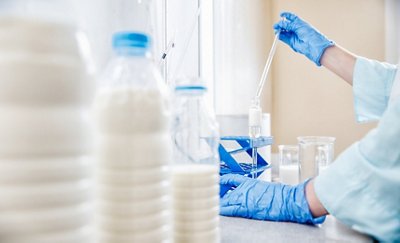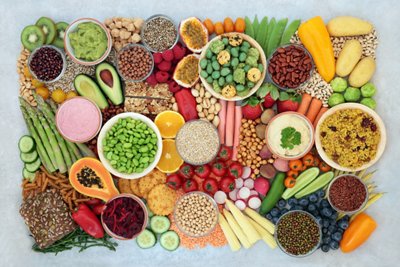What’s next in food safety? Key trends for 2025 and beyond
By the bioMérieux Editors | Reading time: 4 min
PUBLICATION DATE: JANUARY 8, 2025
At bioMérieux, we proudly operate at the forefront of diagnostics, supporting customers across the food and drinks industry to help protect consumers and strive for the very highest standards of safety and quality. As we enter 2025, we reflect on the trends we can expect to see in this important sector this year.
Use of digitalization and artificial intelligence (AI)
The collective interest in digitalization and automation has grown significantly in recent years, with uptake of AI across businesses reaching 72% in 2024[i]. The field of food safety and quality is no exception to this trend, with more companies embracing these solutions, analysing collected key data to streamline processes, enhance efficiency and minimize risk.
AI & machine learning
Use of AI and machine learning technology in food quality control has signalled a new era of autonomous monitoring and global collaboration within the industry. In the face of increasing demand, the food industry will continue to adopt these intelligent systems to enhance activities such as food quality assessment, food classification, and prediction.[ii]
Blockchain for traceability
Enabling full traceability, transparency and rapid data retrieval, blockchain will continue to be a valuable tool for ensuring compliance with food traceability requirements. This technology can also protect against interference with data, supports independent verification, and with the use of ‘smart contracts’ can specify which food safety requirements products should be checked against.[iii]
Internet of Things (IoT)
The value of IoT lies in its ability to seamlessly collect and transmit data from various sources. When integrated within food safety and quality, the potential of IoT is significant – by connecting a network of sensors and devices throughout the food supply chain it can allow a more systematic, accurate and efficient approach to monitoring.
Aggregating test results from multiple sources
Modern food manufacturers are amassing huge amounts of data from different hardware, but the results do not speak to each other, making it challenging to interpret their meaning. Automated solutions that bring data from different sources together can help to identify patterns across an entire manufacturing operation, delivering key learnings that can enhance global operations.
Whole genome sequencing (WGS)
WGS supports the rapid identification and characterization of micro-organisms – a key requirement for maintaining food safety and quality – with a level of precision not previously possible. Wider use of this technology in food safety will create opportunities for enhanced integration of information from other sectors, which could contribute to greater consumer protection, trade facilitation and food safety.[IV]
Clean labelling and sustainability
A survey of global consumers revealed that 75% would be willing to pay more for products that promise clean label properties, such as being free from artificial colours and preservatives.[V] The ongoing growth of the clean label movement also aligns with growing consumer demand for sustainable practices, as prioritizing natural and minimally processed ingredients can help to minimize manufacturer’s carbon footprint.
Eco-friendly packaging
The global food industry’s reliance on single-use plastics has had negative impacts on the environment, and consumers want to see companies make greater efforts to address this. By investing in packaging solutions that use renewable or compostable materials, companies can reduce the amount of waste directed to landfill whilst meeting consumer demands. In the year ahead we expect to see more companies harness cutting edge technology to create packaging which ensures food safety and balances this with sustainability.[VI]
Reducing food waste
The United Nations estimates that around 13% of all food produced globally is lost between harvest and retail, at significant cost to both the planet and the global economy.[VII] As a result, more manufacturers are prioritizing the issue of waste by tackling it holistically, conducting detailed evaluations of processes to reduce the level of waste created, and also finding ways to repurpose waste, such as diverting it to the animal feed industry.
Clean labels
Originally, the concept of clean labelling was purely associated with products that do not contain artificial ingredients; however, this definition has now broadened beyond the components of food. With consumers making more informed choices, clean labelling has rapidly become an indicator of a manufacturer’s overall commitment to providing cleaner food solutions, along with clear and transparent information.
Sustainable farming practices
A combination of regulatory pressures and consumer demand have contributed to a shift towards making farming practices more sustainable, inclusive and resilient. Examples include an increase in the use of regenerative and organic farming methods, use of precision agriculture technologies (such as drones and sensors), the integration of digitalization and ensuring practices are more climate smart.

New consumer demands
Consumer tastes and preferences are constantly evolving, which will in turn continue to drive customer behaviour and unlock new product areas for 2025. For example, a recent survey of European consumers showed that around 60% of participants were actively trying to eat healthily,[VIII] reflecting ongoing consumer trends towards making more conscious choices about food.
Alternative proteins
With growing numbers of consumers embracing vegetarian and vegan diets, increasing livestock populations globally and the overall demand for food mounting, the need for new protein sources outside of animal proteins is greater than ever. This demand is expected to continue, resulting in further innovations in alternative proteins (plant, insect and microbial based) and their applications.
Allergens
Another growth area for the food industry is the allergen-free market, which now features a range of sub-category markets including gluten-free, dairy-free and nut-free. Driven by consumer preference, greater understanding of the impact of allergens on health and an increase in the number of individuals adopting allergen-free or restricted diets, the allergen-free market will continue to flourish.
Functional ingredients (probiotics, prebiotics)
Consumer demand is also expected to continue for functional foods and ingredients which are enriched with nutrients that offer specific health benefits. Examples include probiotics, prebiotics and fermented foods, which are associated with good gut health and overall wellbeing. Foods that support a healthy digestive system are also expected to remain popular with those targeting optimal digestion, immunity, and mental health.
Proactively adapting to new trends in food safety is not just a necessity, but an exciting opportunity for food and drink companies to show that they are leading the way in a highly competitive space.
As well as tracking consumer led trends and new technologies, it is also imperative for companies to remain in step with anticipated changes to the regulatory landscape.
By tapping into new trends, food and drink companies can unlock new ways to stay relevant to their customers, foster new innovations to improve operations and ultimately maintain their competitive edge for 2025 and beyond.
[I] https://www.mckinsey.com/capabilities/quantumblack/our-insights/the-state-of-ai
[II] Ikram, A., Mehmood, H., Arshad, M. T., Rasheed, A., Noreen, S., & Gnedeka, K. T. (2024). Applications of artificial intelligence (AI) in managing food quality and ensuring global food security. CyTA - Journal of Food, 22(1). https://doi.org/10.1080/19476337.2024.2393287
[III] Mu, W., Kleter, G. A., Bouzembrak, Y., Dupouy, E., Frewer, L. J., Radwan Al Natour, F. N., & Marvin, H. J. P. (2024). Making food systems more resilient to food safety risks by including artificial intelligence, big data, and internet of things into food safety early warning and emerging risk identification tools. Comprehensive Reviews in Food Science and Food Safety, 23, e13296. https://doi.org/10.1111/1541-4337.13296
[IV] Food and Agriculture Organization of the United Nations in collaboration with the World Health Organization. Applications of Whole Genome Sequencing in food safety management. Available at: https://openknowledge.fao.org/server/api/core/bitstreams/02b69015-fa4f-4118-95e1-9f11301acd39/content
[VII] https://www.un.org/en/observances/end-food-waste-day
[VIII] https://www.statista.com/statistics/1447744/attitudes-towards-food-in-the-eu-27/
YOU MAY BE INTERESTED IN THESE ARTICLES
SHARE THIS ARTICLE:
- Food Safety


